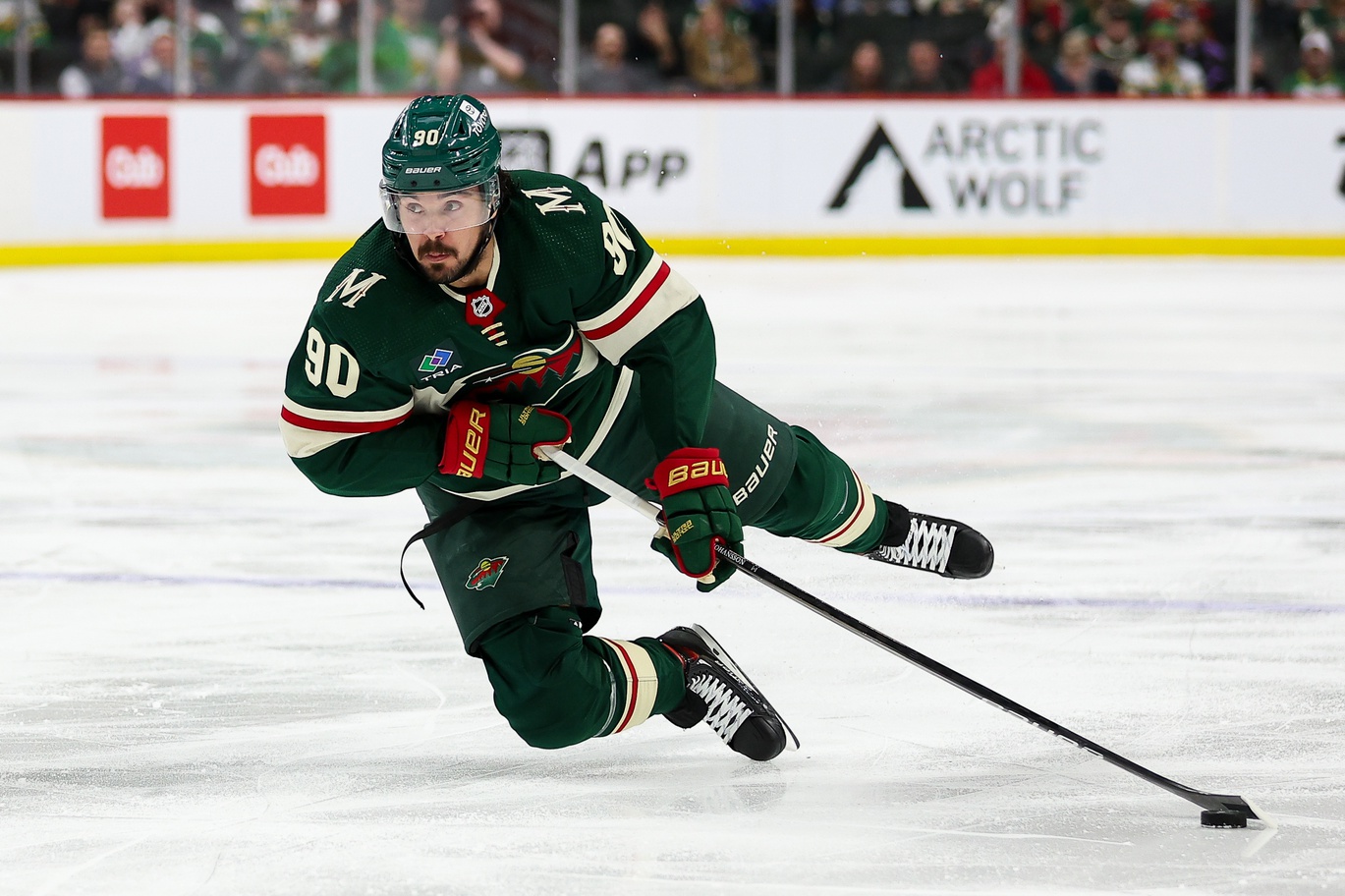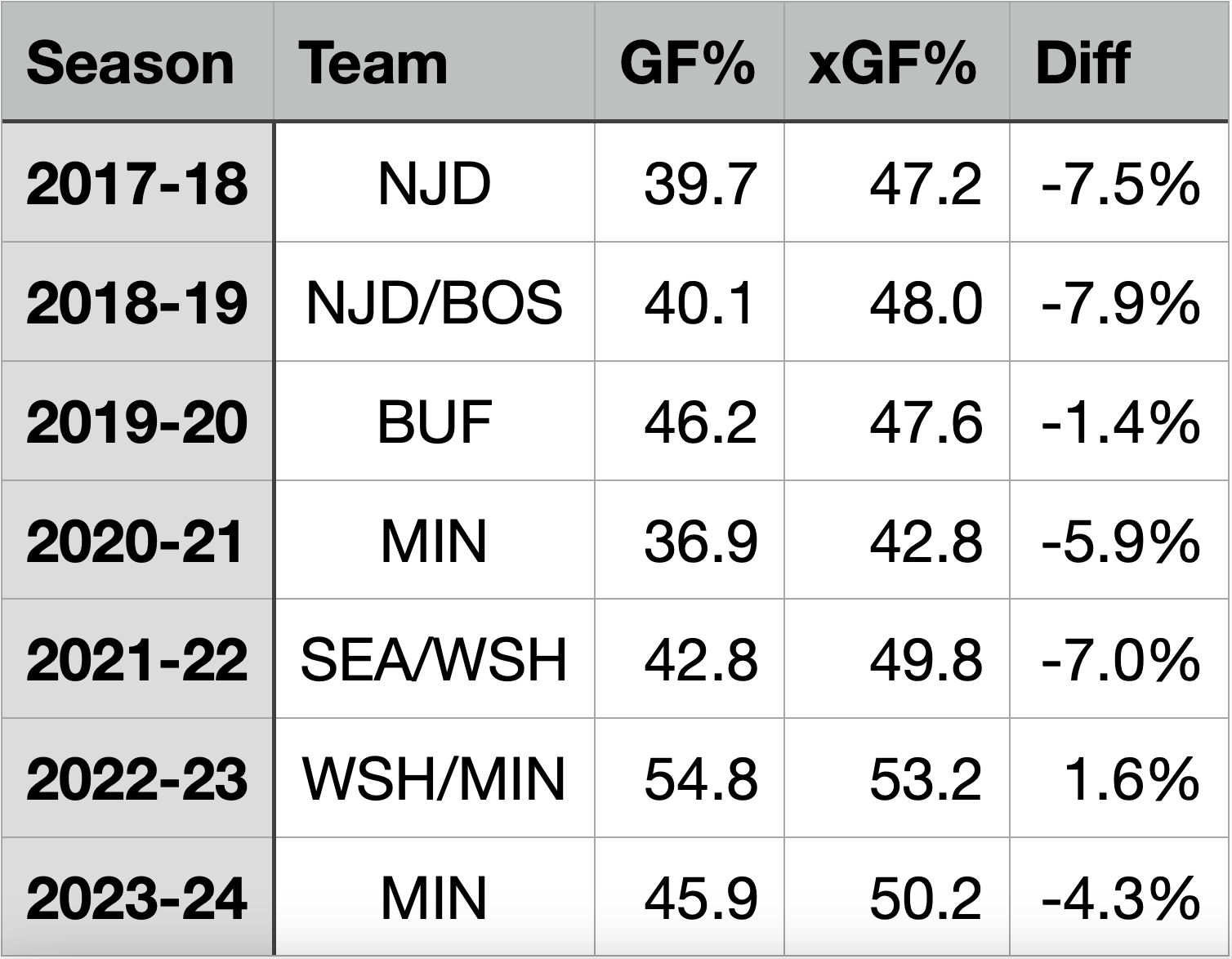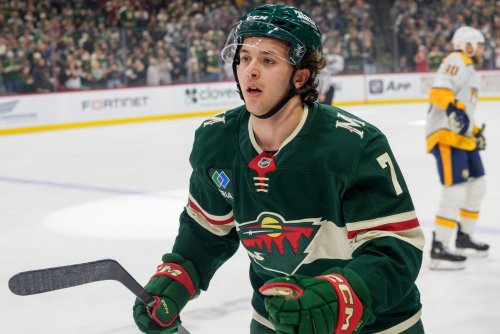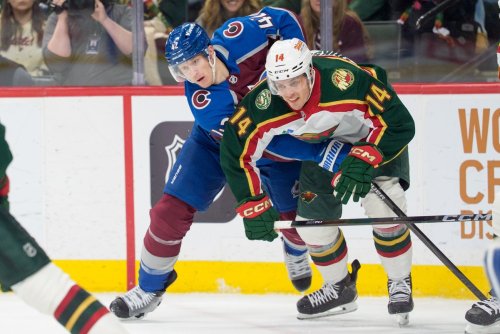
When you think of the most frustrating players in Minnesota Wild history, you'll find very few "bad" players on the list. It's difficult to be frustrating and actively bad. Fans aren't haunted by Eric Nystrom, Brad Staubitz, Brad Hunt, or Zenon Konopka's play. Those weren't particularly good players; if you expected more from them, that's on you.
No, a player doesn't frustrate unless they have flashes of brilliance. You can't be disappointed in a player unless you can't see, at least in theory, how they could be productive. For the Chicago Blackhawks, Cam Barker was a big, point-accumulating defenseman. If it weren't for that, Wild fans would just be haunted by the cost to get him, Nick Leddy, and not that he looked like he'd never played hockey before once he stepped into the Xcel Energy Center.
That's an extreme example, but it applies to other frustrating players who take residence in the State of Hockey's mind. John Klingberg was fine at running a power play and could exit the defensive zone well. There were things he did that worked. The problem was that he would often exit the defensive zone by returning to the bench after allowing a puck in the back of the net.
Even in an older, close-to-broken-down state, how many players in Wild history were as talented as Thomas Vanek*? Has Kirill Kaprizov ever pulled off a goal quite this spectacular?
If this was the Vanek we saw every night, his number would be in the rafters. Instead, there was also the Vanek we saw in his own zone. And also the one we saw in the neutral zone. He worked as a power play specialist over the next few years, but the Wild needed (and paid) him to be an even-strength player that he couldn't be.
Marcus Johansson is rapidly hurdling toward all-time frustrating player status, and it's not that a player like him can't work with the Wild. It was unrealistic to expect his heater from last season's stretch run (six goals and 18 points in 20 games) to continue, but the player he was for Minnesota worked even outside the context of high shooting percentages.
Johansson was a perfect third wheel to Matt Boldy and Joel Eriksson Ek, and that's no slight. His speed and ability to carry the puck into the offensive zone complimented Boldy and Eriksson Ek's game. Without the duties of bringing the puck into the zone, Boldy could find soft spots in scoring areas, knowing Johansson would find him. Eriksson Ek was free to forecheck and clean up rebounds. It was a perfect system.
So much so that it made Bill Guerin forget all about the 2020-21 season, where Johansson scored 14 points in 36 games (out of a possible 56) and signed him to a two-year contract worth only $4 million.
Are the Wild getting what they paid for, though? I'll go on record and say a hard: Probably? Johansson isn't having the kind of nightmare season Freddy Gaudreau is having, for example. Nine goals and 27 points in 64 games is underwhelming, but it's not nothing. Evolving-Hockey assesses his value as 0.7 Standings Points Above Replacement, which more or less lines up with his $2 million salary.
So, speaking personally, why is Johansson so difficult to watch?
I'm sure some of this is recency bias. The Wild have gone 12-4-3 since the All-Star Break, but Johansson's been nowhere to be seen on the scoresheet, with just one goal and three points. Going back to the New Year, Johansson has played in 29 games and scored five goals and seven points. Nearly 30 games of invisibility will leave a bad taste in anyone's mouth.
But extended periods of invisibility aren't anything new to Johansson, who is a pretty streaky player. We can break down his season into three movements:
First 22 games: 1 goal, 7 points
Middle 13 games: 3 goals, 12 points
Last 29 games: 5 goals, 7 points
That's a point-per-game sandwich but surrounded by 51 games of invisibility bread. It doesn't work this way, but if we remove those 13 games in the middle, Johansson's stat line would be six goals and 14 points. Jake Middleton (7 goals, 21 points) would be leading him in both categories. Connor Dewar (10 goals, 14 points) would pass him in goals, and Pat Maroon (4 goals, 16 points) would be ahead in points.
Heck, without that little hot streak, Johansson would be trying to fend off Gaudreau (4 goals, 13 points) and Zach Bogosian (3 goals, 12 points).
It might not be totally fair to compare his stats without his best stretch. But it gives a glimpse of what Minnesota has missed from Johansson for most of the season, especially since having a second-line scorer for those 13 games helped the Wild get to the borderline playoff contention they're in now.
Minnesota went 8-5 in that 13-game stretch and 8-3 before Kaprizov got hurt in Winnipeg. Johansson was instrumental in wins over the Calgary Flames (game-tying assist in the third period), Boston Bruins (opening goal), Montreal Canadiens (assist on overtime-winner), and Detroit Red Wings (two goals, three points).
We could see how Johansson could work as a productive member of the lineup. He can use his speed to create opportunistic scoring chances and has enough skill to dish out beautiful passes. Johansson's zone entries might not be the superpower they were last year, but he's still one of the better players on the team in that category.
But way too often, it translates to not nearly enough scoring. At 5-on-5, Johansson has been on the ice for 30 goals for his team and 35 for his opponents. That deficit isn't quite as bad as his minus-12 makes it seem, but the Wild are still underwater with him at 5-on-5, scoring only about 46% of the goals.
His scoring rate (2.19 goals per hour at 5-on-5) is in the lower half of the team, as is his goals allowed (2.57 per hour). He's at a break-even point when it comes to scoring chances, so you might expect his goal differential to rebound closer to a 50/50 split.
Except Johansson has made the latter part of his career underperforming his expected goals. Here's how he's done every season since his first stint with the Washington Capitals ended:

At this point, it's a trend. You know what you're going to get with Johansson, and that's fewer goals than you'd otherwise expect. Maybe that's a top-six forward on paper. But in practice? It's been a drag on the team's second line all season.
Because it has been all season that we've seen Johansson firmly entrenched in that second-line role. Yes, Johansson is seventh on the team among forwards in average time on ice (15:54). But when you look at his most common linemates this season, you'll get a feel for how absurd his opportunities have been relative to his scoring.

Playing with Johansson has been a drag on just about everyone's offense. It probably doesn't help that each player has between 20 to 45% of their 5-on-5 ice time with Kaprizov to heighten the contrast between playing with and without Johansson. But still, it's pretty damning that every single top-six forward has been better without Johansson.
It's no coincidence that Marco Rossi and Mats Zuccarello sparked to life the second they moved away from Johansson. John Hynes juggled his lines in the third period on Saturday against the St. Louis Blues. In just 4:31 together at 5-on-5 (per Natural Stat Trick), the trio rewarded the switch with two goals, including Rossi's first tally in 13 games.
Again, playing with Kaprizov is going to help anyone score. But no one should be surprised that Rossi looks like an impact player with an opportunity to play without Johansson (or fourth-liners Vinni Lettieri and Jake Lucchini).
Johansson has had enough time in Minnesota across two stints to prove who he is. He's a player with a speedy element that you want on a team. He flashes scoring runs occasionally but is ultimately too frustrating to put in your top-six forward group regularly.
The Wild are clawing for a second Wild Card spot. They're four points behind the Los Angeles Kings and Vegas Golden Knights and must leapfrog the St. Louis Blues to get that playoff position. They'll have to do this without Eriksson Ek (for now) because he's on the shelf with injury. Minnesota can't hold anything back. Hynes knows this. That's why he played Kaprizov and Boldy for over 24 minutes each on Saturday. It's crunch time; everything has to be on the table.
But more importantly, the Wild can't have anyone holding them back. Unfortunately, Johansson has been holding back every impact forward this season. While their options are limited, they have one big card to play in Marat Khusnutdinov. Can we expect a rookie with only two games of NHL experience to suddenly step into a big role? It's tough to say, but the Wild similarly challenged Brock Faber last year, and it paid dividends.
The counterpoint to any reservations about replacing Johansson with Khusnutdinov in the top-six is pretty simple: Can it get meaningfully worse? The Wild have gotten absolutely nothing from their second line since the All-Star Break. Johansson has been a constant in that role, and while Hynes might feel he knows what he's getting from the veteran, that's not a positive when he's consistently sub-par.
It's time for a change, both to maximize Minnesota's upside and to reduce the frustrations of fans who are watching Johansson's line accomplish very little on a nightly basis.
*Full disclosure: It's easy to understand why people were frustrated with Vanek, but on a personal level, I just think the dude was awesome. A decade later, I'm still ride-or-die with Rossi's former landlord.
All data via Evolving-Hockey unless otherwise noted.
Think you could write a story like this? Hockey Wilderness wants you to develop your voice, find an audience, and we'll pay you to do it. Just fill out this form.
-
 1
1
-
 2
2








Recommended Comments
Join the conversation
You can post now and register later. If you have an account, sign in now to post with your account.
Note: Your post will require moderator approval before it will be visible.